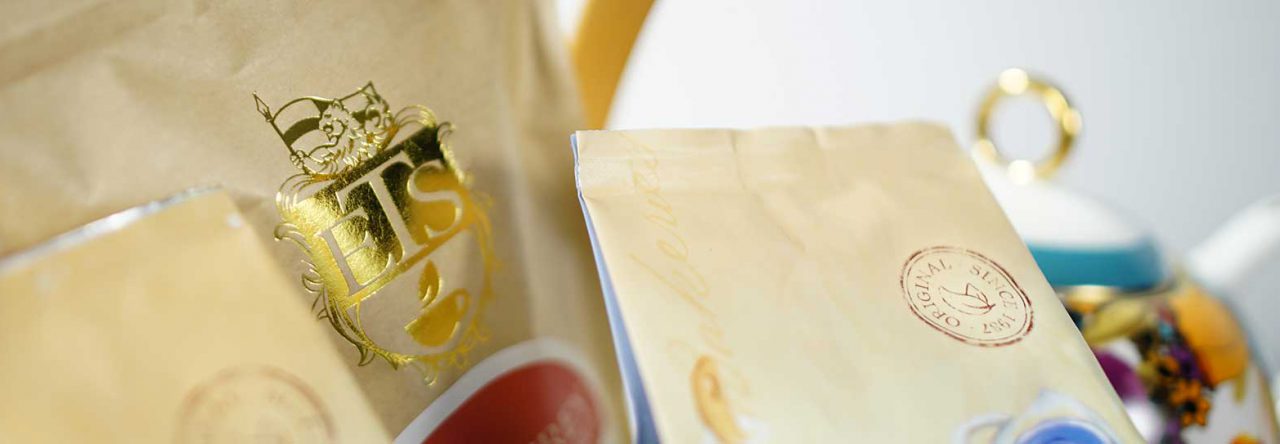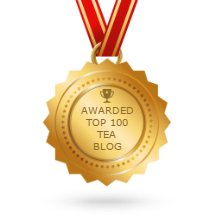Just as the terms “artisanal tea” and “artisan tea” are being applied to just about any tea under the sun (as I discussed in a previous article), so are the terms “hand-crafted tea” (sound of audible heavy sigh) and “handmade tea” similarly misused (both basically mean to refer to what is more appropriately called “hand processed tea”). Time to sort out the wheat from the chaff here and see what a hand-crafted tea really is, according to various tea professionals. Note: This is in no way a judgment of either machine or hand processed teas being worse or better (each has its merits); this is about properly labeling which is which.

First, What It Is Not
The terms “handmade,” “hand-crafted,” or “hand processed” seem to be used synonymously. So I will use “hand-crafted” from hereon in this article since it tends to be the biggest buzzword.
A hand-crafted tea is not processed by the ton in a tea factory that uses big machines. Nothing wrong with this style of processing. It generates some wonderful teas, mostly the kind that ends up in teabags from companies like PG Tips, Lyon’s, Taylors of Harrogate, and Typhoo. But they should not be labeled or referred to as “hand-crafted.” (Note: none of these tea companies named here use those terms, as far as I could find.)
Sadly, some other fairly well-known tea vendors do call their teas hand-crafted, making statements like “…some of the factories that have been producing hand-crafted fine teas for [their company]…”, despite that processing being done by machines in big batches and then putting the tea dust or fannings into those little string-and-tag teabags. Nothing wrong with the teabags, but true hand-crafted teas are not handled this way.
Other vendors use the terms “hand-crafted” in another way: They list teas that are loaded down with other stuff, and say that the hand-crafted aspect is that they mixed in that other stuff with the tea leaves in small batches, not in a huge vat. A more proper term here would be “hand-mixed flavored tea.” But hey, “hand-crafted” draws more search hits these days… anything to attract customers who don’t look too closely at the details.
What It Is
There doesn’t seem to be an official consensus on when a tea is hand-crafted. I put forth that to be labeled hand-crafted, most or ideally all of the processing (but not necessarily the harvesting of the leaves) should be done by hand. Being a sensible person, however, I accept that machines are needed for some stages of the process, such as rolling. The question is one of degree here, then.
Think of it like buying a “hand-crafted” item of clothing only to find that the item was sewn on a machine, not stitched by hand (of course, to be fully handmade, the item should not only be stitched by hand but be made of wool, silk, or cotton that was collected and processed by hand into the cloth used) – it is technically only partially hand-crafted. These days, though, we accept a sewing machine (one of those tabletop models) and the cloth being bought from a store as part of that “hand” part of the claim. So probably a similar bit of slack needs to be granted to tea processors (not including the one who recently claimed that tea leaves processed entirely by machine were hand-crafted).
Levels of Hand-crafting
Whether the tea leaves are harvested by machine or hand (although usually by hand), there are a couple of levels of hand-crafting them:
- Full – all steps in the processing are done by hand, usually in small batches (less common these days).
- Partial – most steps in the processing are done by hand, usually in small batches.
Steps often done by hand for partials:
- Sorting the leaves by grade.
- Spreading out to wither.
- Shaking in woven bamboo baskets to bruise leaf edges and speed up oxidation (this has been mechanized in many places).
- Drying and pressing the leaves in a wok over a fire.
- Hand-rolling the leaves.
- Pressing wet leaves into cake molds or presses (for pu-erhs).
- Sewing leaves together (for blooming teas).
Some teas that really need to be hand-crafted:
- White teas such as Silver Needle consisting of tight buds covered with silvery “hairs”
- Premium green teas such as Bi Luo Chun (see this video of hand processing Bi Luo Chun)
- Blooming/flowering teas (handpicked mostly premium green tea buds, hand sewn with cotton thread and tied to flowers like jasmine, hibiscus, chrysanthemum or rose by skillful Chinese artisans to make rosettes)
- Premium oolongs such as Wuyi yancha (a type of semi-fermented oolong tea)
A key also is working in small batches. If a vendor promotes a tea as “hand-crafted,” it should be something that is more rare. Otherwise, you will want to question their use of that term. Processing the leaves by hand in small batches gives better control over the various steps. For example, hand-crafted Nonpareil Tai Ping Hou Kui involves hand pressing the leaves during roasting to maintain the complete leaf shape and a more natural appearance, as well as a richer, smoother, and more vivid flavor.
Bottom Line
The trend toward labeling teas as such things as “rare,” “artisan,” and “hand-crafted” are part of a marketing strategy to draw in those who go by those terms without looking past the vendor’s label. Be informed and know if that is really what you’re getting. There are some wonderful teas out there that really do deserve these adjectives. Find them and enjoy truly wonderful tea experiences that are worth their higher price.
See also: Processing Tea by Hand or Machine
See more of A.C. Cargill’s articles here.
© Online Stores, Inc., and The English Tea Store Blog, 2009-2014. Unauthorized use and/or duplication of this material without express and written permission from this article’s author and/or the blog’s owner is strictly prohibited. Excerpts and links may be used, provided that full and clear credit is given to Online Stores, Inc., and The English Tea Store Blog with appropriate and specific direction to the original content.



Leave a comment